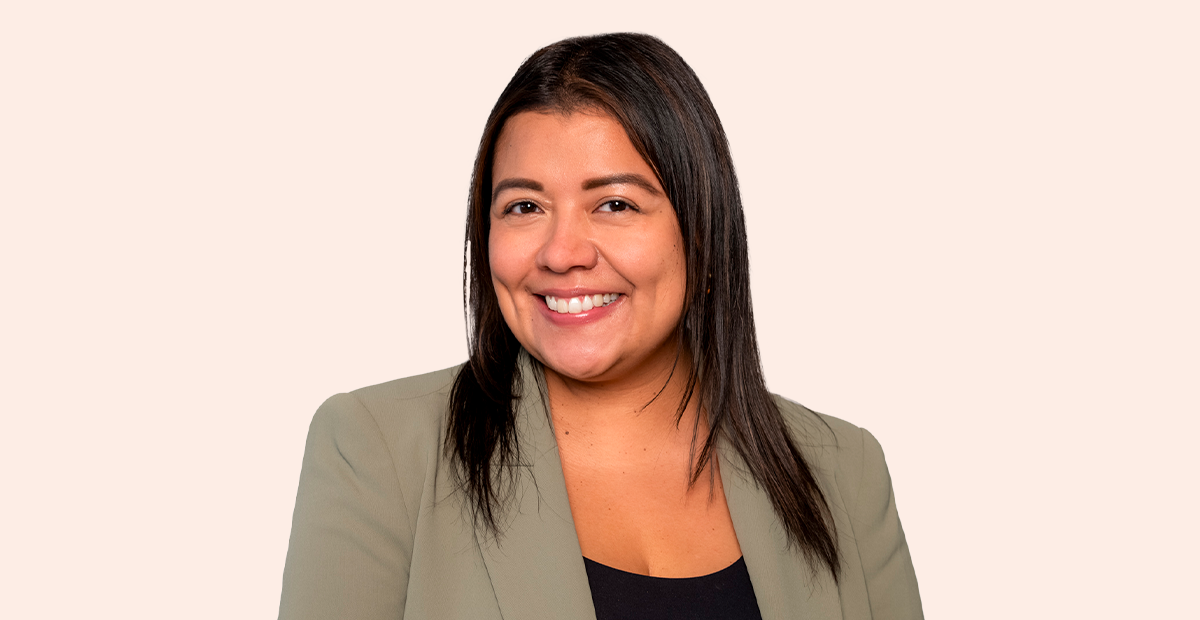November 10, 2025
By Adriana Lopez, Senior Vice President, Digital, GCI Health
This year marked the 9th annual Women of Color in Pharma (WOCIP) Conference, bringing together professionals from across the spectrum of the pharmaceutical and life sciences industry. While participants included physicians, pharmaceutical executives, health advocacy and consulting leaders, data specialists and healthcare communicators, one thing nearly all of them shared in common is a firsthand understanding and/or experience with the barriers to healthcare access and inclusion for communities of color.
WOCIP nurtures professional development to elevate healthcare leaders to ensure representation in the industry. It also makes space for dynamic discussions on how to advance health equity. At the conference, I had the privilege of speaking on a panel, “The Future of Click, Connect, Commit,” where we explored how technology is forging new pathways for clinical trial equity. As a proud Latina and a digital communications expert, I brought my unique perspective on how to resonate with and serve the Hispanic community. For our families, healthcare is a shared experience; rather than being seen only as individuals, we want to be acknowledged as a collective where our abuelos, parents, tíos and tías are all part of the decision-making process when it comes to our health. Recognizing these distinct cultural nuances is paramount, especially when designing communications strategies aimed at building trust and creating health impact.
Here are some other key conference takeaways:
1) Cultural Communities Are Not a Monolith
Generic cultural marketing fails to acknowledge the vast diversity that exists within communities. The Latino community, for example, includes people of diverse descents; whether someone is Puerto Rican, Mexican, Cuban, Central American, South American, Afro-Latino or Indigenous can have a profound impact on their lived experiences and cultural traditions. For communicators, it’s critical to embrace cultural nuances through imagery, language and messaging that reflect these diverse identities, family structures and health beliefs. In Hispanic marketing, this means going beyond literal translation and instead focusing on “transcreation.” A direct Spanish translation can often miss cultural context, idioms and emotional resonance. Thoughtful transcreation can adapt messages to be culturally and linguistically appropriate. Doing the work and going the extra mile to assure authenticity signals respect and understanding. When a community sees itself genuinely reflected, it feels seen and valued.
2) AI Search: A New Frontier for Meaningful Connection
A recent survey conducted by GCI Health found that nearly one-third of Hispanic people (32%) say they use AI at least weekly for health and wellness information. Interestingly, people trust AI for health and wellness information (35%) more than social media (21%). The emerging preference for AI as a trusted resource presents a unique opportunity to bridge gaps and deliver critical health information directly to those who need it most.
For healthcare brands, this also creates a call to action to optimize digital content for clarity, authority and accessibility in order to source the information provided by AI summaries. Concise, fact-checked, culturally competent content that directly answers common health concerns and leverages structured data (like FAQs, bulleted lists and schema markup) is more easily digestible for AI models. Companies can build the foundational trust necessary for AI algorithms to surface their content as reliable and relevant by consistently publishing evidence-based information on owned, authoritative channels.
3) The Bad Bunny Effect: Representation Builds Trust
I also had the opportunity to participate in a fun and fascinating discussion on centering trust in Hispanic communities, inspired by the strategies that launched Bad Bunny to global stardom. Unlike other entertainers, Bad Bunny proudly retains his accent and infuses Puerto Rican slang into his music, unapologetically. He incorporates his culture, his language and his unique style into everything he does. He doesn’t try to fit a mold; he creates his own. The cultural references in his lyrics resonate deeply with his audience—he clearly understands the emotional and cultural weight of words. Bad Bunny’s star power is rooted in his profound connection to his community. His concerts are not just musical performances; they are immersive cultural celebrations that foster a shared sense of joy among his community of fans.
We gleaned many rich insights through Bad Bunny’s approach that can also be applied to healthcare communications. The bottom line? Effective communication removes barriers and shows respect for the audience’s linguistic and cultural identity. Doing so ensures messages are not just understood, but truly felt.
4) Engage Advocacy and Community Organizations Early and Often
Co-creating content with patient advocacy organizations and taking patient connections outside of clinical settings builds measurable, real-world impact in driving early diagnoses. This means partnering with trusted local groups (e.g., churches, schools, cultural centers) to co-create health initiatives like health fairs, mobile clinics and educational workshops that can be offered in culturally familiar settings.
Engaging with patient navigators and promotores de salud—trusted community members—can also help bridge gaps for patients. When companies galvanize peer-to-peer support and elicit patient testimonials, they can tap into the power of shared experience, where trust is built through relatable journeys. Direct, visible engagement and empowering community members to be part of the solution demonstrates genuine commitment, respect and a willingness to meet people where they are.
